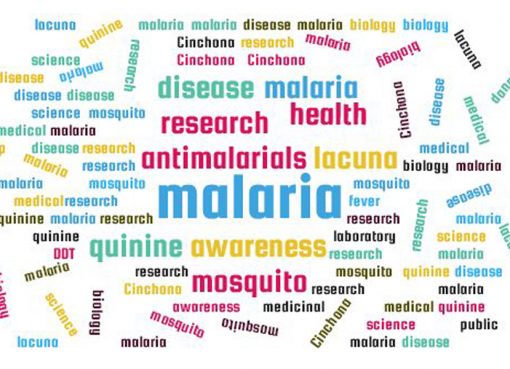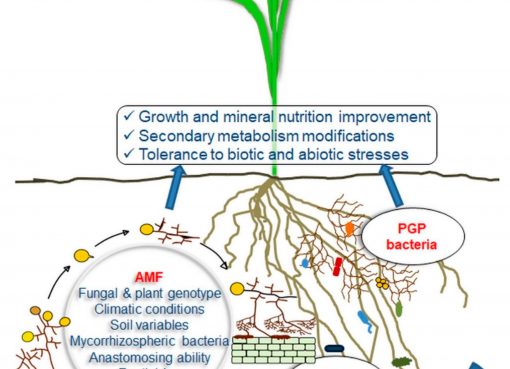Milk Fever in Dairy Animals with Special Reference to Economic Losses
Dr. Prerona Patowary, M.V.Sc.
Dept. of Veterinary Clinical Medicine, Ethics & Jurisprudence
College of Veterinary Science, AAU, Khanapara.
Introduction
Milk fever, also known as parturient paresis, is one of the most common metabolic diseases of dairy cows that occurs immediately after calving (within 48 hours) as a result of low calcium level (hypocalcaemia) in the blood. As during this period the animal is tremendously challenged to maintain calcium homeostasis because of physiological and pathological factors, those that fail can develop milk fever, which may be life threatening to the cow and may predispose her to a variety of other disorders along with a huge loss in its milk production. As a consequence, this disease becomes extremely important from the economic view point.
Epidemiology
After onset of lactation, most of the dairy cows will enter a stage of negative calcium balance. Parturient paresis is a disease of high-producing dairy cattle. It is estimated that 3 to 8% of dairy cows are affected by milk fever and some herds having its prevalence as high as 25-30%.
Risk factors
The risk factors for hypocalcaemia can be grouped into intrinsic and extrinsic factors.
Intrinsic factors:
Age: The risk of a cow developing milk fever will increase with her age and it will be most marked in cows from third to seventh parturition due to ageing and increase of milk production from third lactation onwards which result diminished ability to mobilize calcium from bone stores.
Breed: Crossbred cows (Jersey) are more susceptible to milk fever than local cows. It could be attributed to higher milk production and lower ability of the body to maintain calcium homeostasis.
Body conditions score: Dairy cows that are over-conditioned at calving are up to four times more likely to develop milk fever. The occurrence of milk fever also increases in cows with higher BCS, possibly due to decreased calcium intake.
Extrinsic risk factors
Dietary factors: The diets providing dry cows a high daily intake of calcium are associated with an increased incidence of parturient paresis. Cows in this condition are not able to quickly replace plasma calcium lost in milk and become severely hypocalcaemia. Prepartum diets high in cations like sodium and potassium are associated with an increased incidence of milk fever.
Clinical signs of milk fever
Hypocalcaemia can be clinical or subclinical. Clinical milk fever is the most easily recognized form and the most severe, which causes the cow unable to rise and it has a very serious economic impact, while subclinical form doesn’t show any sign. Based on the degree of hypocalcaemia and the time of occurrence the clinical signs of milk fever are divided into 3 stages:
Stage 1: Early sign without recumbancy: The affected cows show nervousness, excitement and tetany with hypersensitivity and muscle tremor of the head and limb. Heart and respiration rates may be within normal or slightly elevated.
Stage 2: Sternal recumbancy with depressed consciousness: drowsy appearance in sternal recumbancy with lateral kink in the neck or the head turned into the flank. The muzzle is dry, the skin and the extremities are cool, rectal temperature is subnormal. Ruminant stasis and secondary bloat are common, and constipation. Prolapse of uterus is a common complication of milk fever.
Stage 3: The cow in lateral recumbancy: This stage is characterized by inability to stand and a progressive loss of consciousness leading to coma. Subnormal body temperature, the heart sounds and the pulse are inaudible. The cow will not survive for more than a few hours without treatment in this stage.
Economic impacts of milk fever
Incidence of milk fever, especially in highly productive dairy cows, affects both the production and productivities of cows. Therefore, the main objective should be to review both direct and indirect impacts on economic consequences in dairy cows, for assessing economic losses caused by milk fever. In NE states, nearly 11% animals are suffering from this disease and this leads to loss in milk yield. The prevalence of the disease in the region is similar to the situation in Tamil Nadu. Thirunavukkarasu et al. (2010) found that 13.67% of cows and 11.99% of buffalo in the study area of Tamil Nadu were affected by milk fever. As per 19th Livestock Census, it was estimated that the number of milch cows and buffaloes that may be affected with milk fever in India can be around 2.65 million crossbred cattle and 6.12 million buffaloes. A newsletter report by NDRI for dairy cows stated that in India, the loss due to milk fever is Rs. 1068.00 per affected cow and Rs. 665.00 per affected buffalo. Taking into account the total milch animal population, loss due to milk fever may be around 6900 million INR, which is a considerable loss to the Indian dairy sector.
The most important direct economic losses associated with milk fever are accounted on reduction in the productive lifespan of affected cow, death and culling of affected animal, reduction in milk production following each milk fever episode, as well as costs of prevention and treatment.
Expenditure on Treatment of Affected Cows
This includes the cost of medicines, veterinarian’s fee, cost of additional labor utilized for taking the affected animal to veterinary centers and for looking after them, cost of feed supplements to bring the affected animals back to their original milk yield.
Economic Loss due to Reduced Milk Yield
The margin of milk sales over concentrates fed on per liter basis is significantly affected. Yearly economic loss due to milk fever in Haryana is estimated to be 1000 crores, in which the value of milk lost had the highest share. In the North East region, it has been reported that the average milk loss due to milk fever is 2.39 L/day per animal.
Economic Losses due to Mortality and Culling of Milk Fever-affected Animals
Severe cases can lead to death of the animal which is one of the direct losses. The cost of fatality is definitely greater than just the value of the animal in the market. It has been reported that about one in 20 affected cows die due to milk fever. Reduction in the productive lifespan of each affected cows is about three years. Some of the animals affected by milk fever may not regain their earlier milk yield. In such cases, the decline in productivity of these milk fever affected animals usually calls for the need to cull them, as their rearing become uneconomical. On an average, losses from deaths account for 8% of affected cows and premature culling around 12% of affected cows.
The indirect impacts of milk fever are as follows-
Milk fever is an important metabolic disease that may predispose dairy cows to several health problems such as clinical mastitis, ketosis, lameness, infertility, retained placenta, reproductive problems and displaced abomasum, generally known as periparturient diseases which indirectly increase the expenses of the dairy farmers through death of cows, culling, treatment and management regimens. Moreover, they have a negative impact on milk yield and reproductive performance, risk of calving problems and overall the well-being of animal is hampered. If left untreated, 60-70% cows die.
Diagnosis
The diagnosis of milk fever depends on the clinical signs of the animal that have calved recently. The age of the dam is also an important factor. Clinical signs like dullness, depression, subnormal temperature, recumbancy, lack of urination and defecation are most likely to occur. Confirmatory diagnosis can be obtained by biochemical examination of blood and rapid characteristic response to treatment with intravenous calcium solution injection.
Table 1. Blood serum concentration of Ca, P, Mg at various stages of milk fever along with normal parameters
| State of health | Blood serum (mg/dl) Calcium |
Blood serum (mg/dl) Phosphorus |
Blood serum (mg/dl) Magnesium |
| Normal lactating cow | 8.4 to 10.2 | 4.6 to 7.4 | 1.9 to 2.6 |
| Normal at parturition | 6.8 to 8.6 | 3.2 to 5.5 | 2.5 to 3.5 |
| Milk fever, Stage I | 4.9 to 7.5 | 1.0 to 3.8 | 2.5 to 3.9 |
| Milk fever, Stage II | 4.2 to 6.8 | 0.6 to 3.0 | 2.3 to 3.9 |
| Milk fever, Stage III | 3.5 to 5.7 | 0.6 to 2.6 | 2.5 to 4.1 |
Treatment
The treatment for milk fever should be started as quickly as possible to prevent further degradation of the case. Calcium supplement through IV route is the most preferred approach to treat hypocalcaemia. However, cows that are still standing should be given calcium solution through oral route. Cows in recumbancy or Stage I or Stage II of hypocalcaemia should be administered with calcium borogluconate solution through parenteral route. While administering through IV route, it should be slow and monitoring of the heart rate is important as overloading may lead to fatal cardiac block. Generally, 1 g calcium/45 kg body weight dosing is followed, mostly available in 500 mL solution of 23% Calcium borogluconate.
If the animal remains in recumbancy for a long time, it may develop bloat resulting into cardiac trouble and asphyxia. In such cases, antihistaminic should be administered. Moreover, udder inflation is another technique followed to treat emergency cases but now largely abandoned due to complications like udder damage and mastitis.
Prevention and Control
There are various milk fever prevention strategies such as:
Dietary calcium restrictions: Cows are fed with diet having low calcium concentration (<15-20 g) from few weeks before calving in the dry period to enhance bone calcium mobilization. But formulating such diet is difficult. Hence, a diet containing < 80 g/day of Calcium can be fed throughout the dry period.
Delayed or incomplete milking: The pressure within the udder is maintained by delaying or incomplete milking which leads to decreased milk production. But this may lead to mammary infections like mastitis.
Dietary Cation-Anion Balance (DCAB): For prevention of milk fever, DCAB negative diet is followed. Diets containing higher amount of anions like chloride and sulphur ions as compared to cations like sodium and potassium in the pre-calving period has shown efficacy in prevention.
Vitamin D supplementation: High amount of Vitamin D3 and its metabolites to prepartum dry cows parenterally is followed as a preventive approach. Dose is a single IM injection @ 10 million unit 3-8 days prior to calving.
Parathyroid Hormone (PTH) Therapy: Administration of PTH enhances calcium absorption from the gut and stimulates bone resorption. Administration of PTH around 60 hrs before parturition intravenously or 6 days before parturition intramuscularly is generally indicated.
Calcium gel: Oral calcium gel (50% Calcium chloride) administration works as prophylactic treatment for susceptible cows at calving. This follows the administration of total 4 doses, one dose each prior to calving, at calving, 12 hours post calving and 24 hours post calving.
Conclusions
Metabolic diseases are of great economic importance and these diseases mostly occur due to faulty management and feeding. Milk fever is one such disease that may incur heavy loss in production due to drop in milk yield and loss of fertility. Hypocalcaemia also makes the cattle more prone to other diseases like RFM, metritis, mastitis, etc. So for prevention, a balanced ration should be fed to the animals according to the reproductive phase of their life. Also better management and proper record-keeping is important to monitor the susceptible cows and prompt treatment is needed to avoid further loss.
References:
- Paul D, Chandel BS, Ray J (2013). Quantity and value of milk losses due to technical constrains- A case of crossbred cows in North-Eastern States of India, Indian Journal of Agricultural Economics, 60(4).
- Thirunavukkarasu M, Kathiravan G, Kalaikannan A, Jebarani W (2010). “Quantify Economic Losses Due To Milk Fever In Dairy Farms’’, Agricultural Economic Research Review, 23 (1) 77-81.
- Veterinary Medicine: A text book of the diseases of cattle, sheep, goats, pigs and horses-10th edition by O.M. Radostits, Gay, Hinchcliff, Constable.
- msdvetmanual.com
- The Ruminant Animal: Digestive Physiology and Nutrition. Chapter 24, Prentice Hall, Englewood, NJ. (1988). Edition by D.C. Church.
- The Dairy Reference Manual, Northeast Agricultural Engineering Service, Chapter 6, Ithaca, NY. (1995), edition by Richard C Adams.
- Oetzel GR, Olson JD, Curtis CR, Fettman MJ (1988). Ammonium chloride and Ammonium Sulfate for prevention of parturient paresis in dairy cows. Dairy Sci. 71: 3302-3309.




